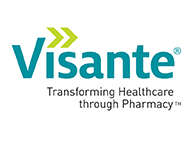SPONSORED CONTENT
We are pleased to again bring you Visante’s Top 10 issues in pharmacy for 2023. For 2022, our Top 10 items (Pharmacy Org Structure, 340B Program, Vertical Integration & Marketplace Restrictions, Drug Prices & Supply Chain, Infusion Services, Drug Shortages, Pandemic, Economy, Election, Social Justice) all turned out to be very relevant and many of these items again made the list for 2023.
To say that 2022 was turbulent would be a significant understatement! With the pandemic, economy, election and social justice issues driving national concerns, including pharmacy, coupled with the more pharmacy-specific elements, it was an extremely challenging year for pharmacy and healthcare in general. However, despite the magnitude of the challenges, we observed pharmacy programs all over the country stepping up and meeting these challenges head-on. Pharmacy programs demonstrated innovation, creativity, commitment to purpose, and a tremendous work ethic in supporting their patients and their organizations and should be justifiably proud of their work in 2022.
1. Workforce Challenges Will Need Unique Solutions at All Levels
Within pharmacy, workforce strategy this past year has focused on pharmacy technician recruiting and retention. In the coming year, the impact will broaden as the labor market pressure on health systems continues to grow and will also include pharmacists and pharmacy leaders. Those who act creatively, decisively, and quickly in 2023 will experience significant challenges and opportunities.
High pressure can turn coal into diamonds or to dust, depending on how skillfully that pressure is managed. Health systems that create a compelling workforce strategy will propel themselves out of the vicious cycle of open positions that lead to burnout, leading to turnover, leading to leadership turnover, and then leading to more open positions. Bold leaders will be able to take advantage of the opportunities created by other vacancies on the health care team and fundamentally increase the level of influence pharmacy has within their organization. Pharmacy leaders would be wise to focus on workforce and invest strategically in this area.
2. Healthcare Technology Evolution
One of the “silver linings” from the continuing challenges brought about by the coronavirus pandemic has been the need to change the way we think about many of our normal processes and to innovate. One area that has received a lot of attention and will continue to do so in 2023 is the development and use of technology to improve our processes and delivery of care. The World Health Organization (WHO) defines health technology, as the “application of organized knowledge and skills in the form of devices, medicines, vaccines, procedures, and systems developed to solve a health problem and improve quality of lives”. For 2023, pharmacy will be a larger part of this technological expansion.
3. Prescription Benefit Management Programs
With prescription drug prices continuing to rise in 2023 driven in large part by specialty pharmaceuticals, PBMs will continue to be in the spotlight for their role in high prescription drug costs and the lack of transparency around their revenue streams. We can expect continued government activity at the federal, state, and local level around PBM business practices, however with Republican control of the House of Representatives, federal action may be more limited. For 2023 the evolution of fully transparent PBM models will continue to be an industry disrupter. Also, we expect to see an increased PBM focus on the management of specialty drugs which now comprise over 50% of the total prescription drug spend but less than 5% of total prescription volume. With specialty drugs, like the new gene therapy for hemophilia B (with an estimated cost of $3.5 million per infusion) challenging budgets, cost containment will be a very important focus. Finally, we expect Fraud, Waste, and Abuse (FWA) prevention activity to continue to increase in 2023 driven in large part by plan sponsor concerns. PBMs will be placing a growing emphasis on helping plan sponsors protect their assets by more aggressively working to prevent FWA.
4. Prescription Drug Prices
The high cost of prescription drugs will continue to be a “top 10” issue for 2023. Release prices were at record highs in 2022 causing many to demand action. Recent investigations found the median annual price of 13 novel drugs approved for chronic conditions by the U.S. Food and Drug Administration was $257,000 this past year. Also, the pipeline for gene therapy continues to expand and the FDA recently approved CSL Behring’s gene therapy for hemophilia B which is expected to be the world’s most expensive drug. In terms of health system price increases, Vizient in their Pharmacy Market Outlook, is forecasting an aggregate 3.26% overall drug price inflation rate for the calendar year beginning Jan. 1, 2023. The rate reflects a continued trend toward moderation of the overall increase in drug prices, a result of the balance between the increased use of high-cost medications, the introduction of lower-cost generic drugs, and greater utilization of biosimilars.
Overall, for 2023, drug price increases will continue to roll on as the general course of action. With the passage and signing of the Inflation Reduction Act late last year, there is now some forward movement toward prescription drug price control. Patients and health systems may have more options in 2023 to control prices – however, that will come at the cost of increased complexity to navigate.
5. 340B Program Challenges
For 2023, the 340B program will again face increasing challenges and scrutiny. As so many hospitals and other 340B providers struggle financially, the discounts available through the program will become even more important to support the continued delivery of services to vulnerable populations. As the lawsuits continue to slowly progress around manufacturer contract pharmacy restrictions, we can expect more companies to join the current list of 19 manufacturers requiring data submission, creating more complexity and time demands on covered entities.
On the plus side, the CMS price reductions imposed in 2018 have been declared illegal. On November 3, the Centers for Medicare & Medicaid Services (CMS) issued an update to its Medicare Part B drug payment policy for hospitals participating in the 340B program and reversed the payment cuts. The policy change follows a Supreme Court decision issued in June, finding that CMS’s prior payment policy for 340B drugs was not allowed under the Medicare statute. Under the new policy, Medicare will pay higher rates to most 340B hospitals for Part B drugs, and Medicare will pay lower rates to all OPPS hospitals for non-drug services. The issue of how to address the overpayments going back to 2018 is still being decided and covered entities should pay close attention to this action and be ready to work on recouping those lost revenues as soon as possible.
Finally, for 2023 with Republican control of the House of Representatives, we can likely expect more attention on increasing transparency around the use of 340B savings as well as efforts to reduce the scope of the program. At the same time, we may also see more state actions on 340B based on the recent federal district court ruling supporting Arkansas’s law challenging the actions of drug manufacturers that have placed restrictions on the use of 340B discounts in the contract pharmacy setting.
6. Infusion Strategy a Top Priority In 2023
A comprehensive infusion strategy will be essential for health systems to generate new revenue, care for patients, support care team workflows, and may even be required for patients to receive needed infusions through the health system. Health systems should evaluate their broader infusion strategy portfolio considering continued payer and market forces. Systems should consider expansion across multiple infusion sites of care including hospital outpatient, physician’s office, infusion suite, and home infusion locations. A combination of multiple options implemented in a coordinated fashion is needed. For systems that are not focused on this area, multiple factors will likely continue to drive infusion business out of the health system.
Payer mandates and benefit designs that financially incentivize the patient to receive high-cost infusion medications outside of the hospital in lower cost settings are likely here to stay. Additionally, 2023 will bring new challenges to discharge care coordination for hospitals. There are, however, great strategies health systems can employ to maintain patient access, support care coordination and mitigate the financial impact.
7. Consolidated Pharmacy Service Centers (CPSCs)
Last year, we highlighted three major pharmacy supply chain trends: health system investment in consolidated service centers (CPSCs), home infusion therapy continued growth, and renewed focus on cost savings. As 2022 ends, it is safe to say that all three trends have played out as predicted and will continue in 2023. Here, we’d like to focus on CPSCs becoming more prevalent. In 2023, we expect more health systems to be looking to build comprehensive CPSCs, comprising pharmacy, medical and surgical supply chain, and other support services. Often, health systems view this strategy as an opportunity for multiple services to collaborate and achieve efficiencies from shared service needs, such as transportation and logistics. Furthermore, it allows for shared savings related to the actual facility build. Overall, even while we observe some health systems decreasing capital funding, we expect organizations to continue to invest resources in CPSCs. This is due to the scalability and long-term returns that systems can expect related to these operations. Pharmacy plays an important role in funding these centers, and pharmacy leaders should engage with key organizational leaders to drive forward these discussions.
8. The Evolution of Specialty Pharmacy
For 2023, the continued evolution of biosimilars will be front and center for specialty pharmacy. 2023 will bring a new wave of biosimilars making their debut in the patient self-administered or take-home category. Most notable in this category is the loss of exclusivity for Humira (adalimumab). Humira has been the top-selling drug worldwide, generating more than $20 billion in revenue last year. With seven FDA approved adalimumab biosimilars set to make their debut in 2023, health system specialty pharmacies are trying to understand what impact this change will have on their programs. We expect the impact will include economical, clinical, and operational considerations as adoption of these therapies becomes mainstream.
We also anticipate an increase in patient access as many payors adopt biosimilars to their formularies for cost savings factors. Like retail counterparts, specialty pharmacies need to be prepared operationally to stock, store, and distribute several products versus one kind of innovator specialty product. Some things to consider are storage space for different manufacturers and distribution adjustments for possible increases in volume to accommodate the different payor plans serviced.
Hospital specialty pharmacy operations will play a key role in the education of the care team on these new therapies. While many providers may have a general knowledge of biosimilars, they may lack knowledge on current biosimilar developments within their specialty. Providers play a crucial role in shaping the patient’s perception of therapy and are a key source of information for patients. By helping providers bridge this knowledge gap and serving as the drug information resource, the specialty pharmacy can support providers as they incorporate more biosimilars in their clinical practice in 2023.
9. Essential Health System Pharmacy Leader Skills
As the healthcare ecosystem continues to evolve at an increasing rate of change, the importance of the pharmacy enterprise also continues to expand. Pharmacy is rapidly moving away from the traditional role of an “ancillary support service” and is becoming a more visible strategic asset contributing significantly to expense management, revenue generation, clinical care, safety, and regulatory compliance. However, the associated complexity of leading the pharmacy enterprise is also expanding and for 2023 pharmacy leaders will need to also continue to expand their skill sets. The following eight areas will be a key focus for pharmacy leaders in 2023:
- Mastery of healthcare finance complexities
- The ability to generate tangible ideas for new pharmacy revenue streams
- Values that place the organization, not pharmacy, first
- Advanced negotiation skills and the ability to leverage them with external business entities
- Entrepreneurial skills beyond traditional silos of inpatient, ambulatory, and retail
- Creativity in how to maximize pharmacy supply chain value for the organization
- Transformational leadership to support the move from an organization to a system
- The ability to attract and retain a diversity of top talent
10. 2023 Financial Challenges
In 2022, the financial impact of a changing payer landscape, drug and supply inflation, rising wages, increased utilization of an outsourced workforce and the diminishing governmental Covid-19 financial relief has put significant financial strain on most U.S. health systems. Many organizations are operating in the red and are being challenged to transform their operations to overcome the headwinds expected in 2023. However, health systems that are leveraging and developing strong pharmacy programs are positioning themselves to successfully weather the storm that lies ahead. These organizations have developed a strong infusion strategy, progressive specialty pharmacy operations, a pharmacy revenue integrity program and have leveraged an innovative approach to acquire drugs at the best possible cost advantage. Health systems with these strategies and services are positioned for improved financial success in 2023.
We see three specific strategies to position pharmacy to best support hospitals, health systems and other safety net providers for future success in 2023:
- Develop a comprehensive organizational pharmacy strategy to grow revenue and margin, reduce non-labor expense and improve pharmacy business integrity.
- Expand the role of the pharmacy executive to develop and implement an organizational strategy to highly integrate pharmacy services.
- Leverage strong internal pharmacy services as a strategic asset.
For questions, please contact Kristin Fox-Smith at kfoxsmith@Visanteinc.com.

Jim Jorgenson is the President and CEO of Visante.




